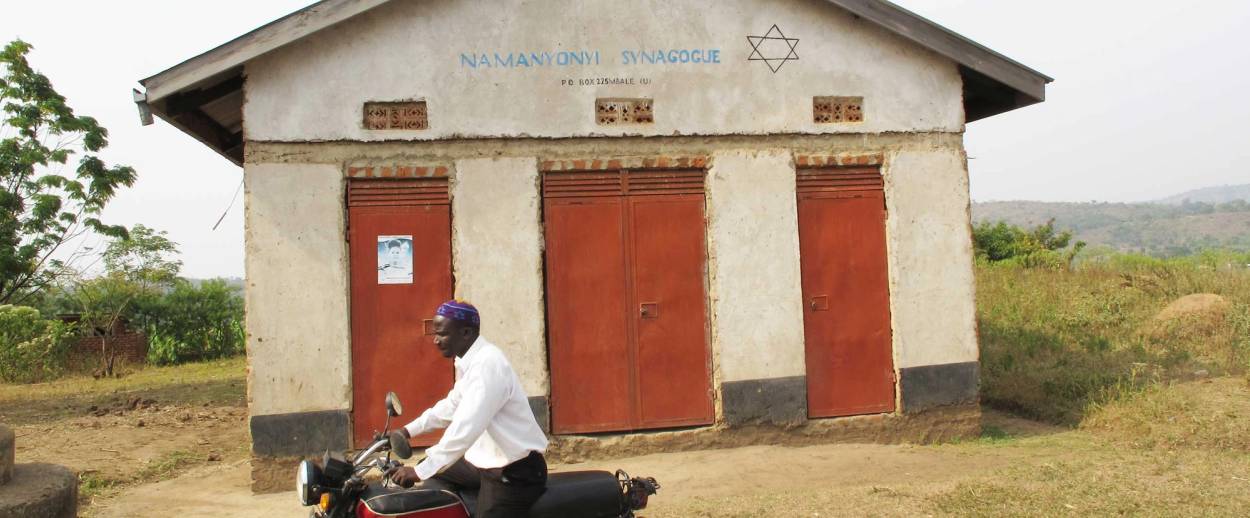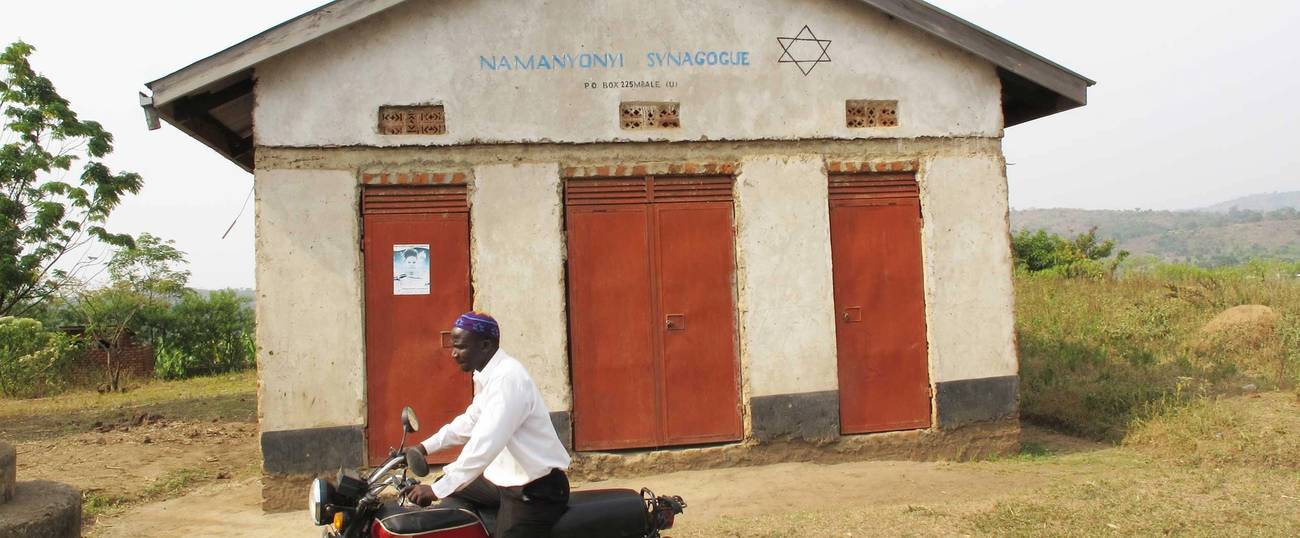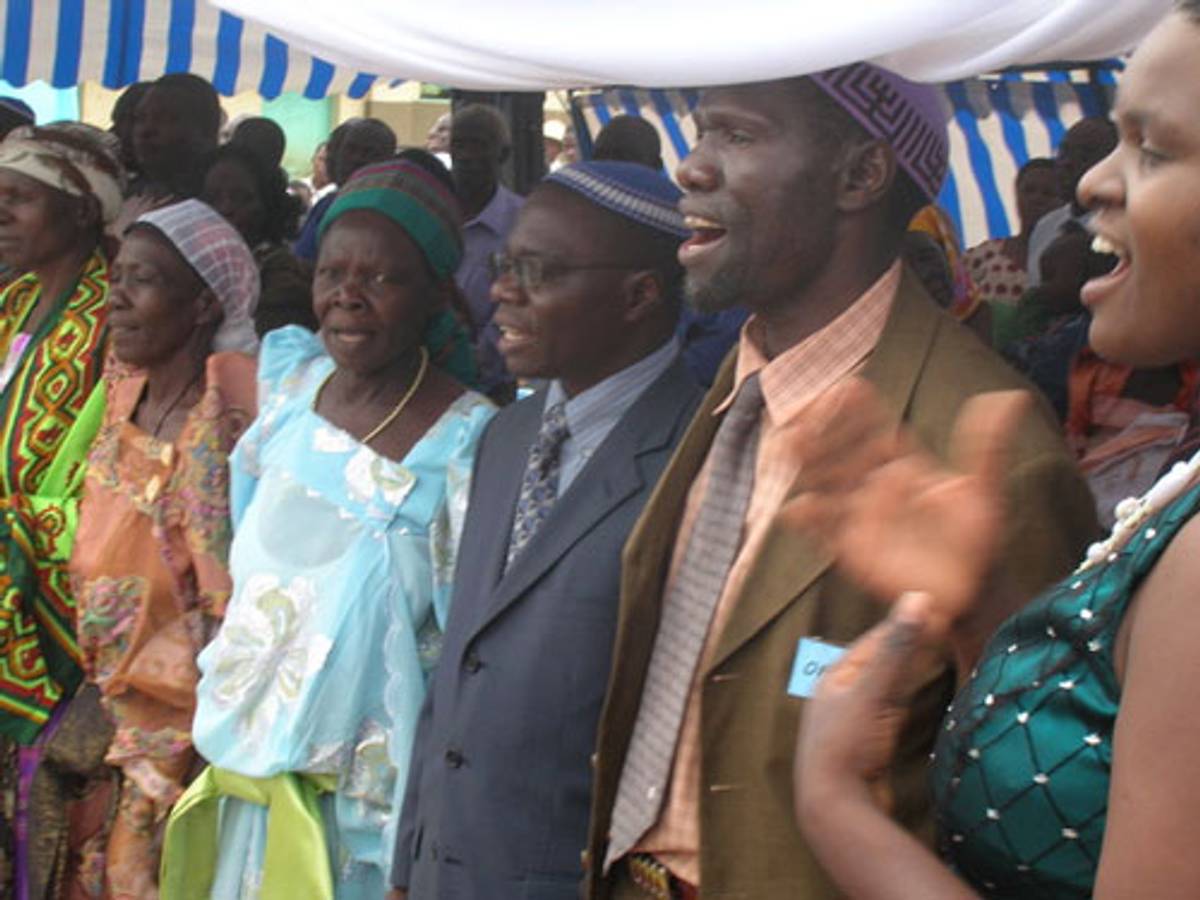Reclaiming My Jewish Self
How a trip to Uganda led me back to the Torah




I didn’t have a bat mitzvah when I was 13.
Growing up in a Reform family in Washington, D.C., I went through the motions of religious school, confirmation, and the celebration of Jewish holidays. But in the 1960s, Jewish girls didn’t typically study for a bat mitzvah. So when my brother was called to the Torah, I watched from the sidelines with my sister. I thought I’d never have that kind of moment for myself, as I internalized the message that Judaism didn’t have a place for me.
But Judaism can find you in the most unlikely places at the most unexpected time. In my case, it was decades later on a packed, sweaty bus ride in Uganda—on a trip that brought me back to Judaism, and the Torah.
*
Tikkun olam—the Jewish obligation to heal the world—is something my parents modeled as active volunteers well into their 90s. My mother was a regular presence in our public schools, assisted with Red Cross blood drives, and, like most Jewish women of her generation, was active in our temple’s sisterhood. Once my father retired, he tutored weekly at a local elementary school where he helped struggling students learn to read. On Christmas Day each year, my parents served meals in the nearby hospital so that Christian members of the staff could celebrate with their families.
Their actions left an indelible mark, but my personal connection to the religious side of Judaism wore thin. As an adult, I considered myself a “cafeteria-style” cultural Jew, picking and choosing what I wanted to observe, none of it particularly deep or meaningful. Yet the Jewish imperative to heal the world stayed with me, the main thread connecting me to my heritage. I followed my parents’ example in myriad small ways, as a volunteer with the local food bank and my children’s schools as well as a potpourri of other actions, but the idea of a big, bold commitment to tikkun olam eluded me.
In 2008, I finally made that commitment by volunteering on an international project with the American Jewish World Service. I chose AJWS not so much because it was Jewish, but because it felt pure: There was no missionary work involved and no hidden agenda—political or otherwise. My three-month assignment was to shore up strategic planning and fundraising for an environmental NGO in Kampala, Uganda. And by either happy coincidence or divine plan, that put me just a bus ride away from Mbale, home of the Abayudaya tribe of Ugandan Jews, just as a remarkable event was to take place: the installation of Uganda’s first rabbi.
The Abayudaya trace their origins back to the wave of British missionaries of the 1800s. The missionaries selected Semei Kakungulu, a powerful Mbale leader, to help introduce Christianity to his tribe. But Kakungulu favored the Hebrew Bible, and in 1919 the community began practicing Judaism. Relying on books from itinerant Jewish peddlers, Kakungulu educated himself and his community. His descendants have practiced Jewish rituals ever since, in isolation from every other Jewish community in the world.
Gershom Sizomu is the grandson of one of Kakungulu’s disciples. For five years, courtesy of American donors, he studied at the Ziegler School of Rabbinic Studies in Los Angeles. And now, he was to become an honest-to-goodness rabbi.
So along with my cohort of AJWS volunteers, on a Thursday morning I piled on the bus and five hours later, landed at the hilltop village where the Abayudaya reside. As I milled among the growing crowd, someone pointed to three white men in business suits among the sea of black faces and colorful tribal prints. They were Gershom’s teaching rabbis from L.A. who were seated with the leaders of each religion practiced in the Mbale area: Christianity, Islam, and traditional animism. The honored guests included a roster of politicos from the village, state, and national levels, as well as journalists from the local and national press as well as international Jewish publications. With locals from the Mbale community and Jews and other visitors from around the world, more than a thousand people were gathered under makeshift canopies to protect us from the hot sun.
The ceremony opened with the national anthems of Uganda and Israel. Everyone in our group stood and sang “Hatikvah” in unison—everyone, that is, except me. I knew the tune but not the Hebrew words so I mouthed them unconvincingly, hoping I wouldn’t be busted. I’d heard “Hatikvah” many times before but this time, in this highly nontraditional setting, the music produced in me a powerful feeling of hope, optimism, and connection.
Next came words of welcome from Gershom’s teachers, speeches by politicians, the installation ceremony, and the celebratory wine. Throughout, the language alternated between English, Hebrew, and Luganda (the tribal tongue for this area), with everything translated back and forth, and all punctuated by African music, dance performances, and regular cheers from the crowd.

Finally, it was the new rabbi’s turn. Rabbi Gershom expressed his love for the Torah and his gratitude to the people who provided the path for him to become a rabbi. He reminded us of the importance of education, both secular and religious. Education is a guiding principle of the Abayudaya, whose school welcomes the children of their Christian and Muslim neighbors. I couldn’t help noticing that despite my years of formal Jewish education, even those children knew more Hebrew than me.
Gershom ended with a prayer that the peaceful coexistence of so many religions in this remote corner of the world might serve as an example to others. As if to prove his point, the ordination finale was a song performed in perfect harmony by the young Muslim, Jewish, and Christian students.
It was all smiles as the crowd dispersed and to my surprise, I found myself swept up in the celebratory atmosphere, my little Jewish heart filling with—what, pride? I had done nothing to be proud of. Or was it some deeper stirring? I didn’t know the answer.
On Friday night, we returned to the Abayudaya to bear witness to the first Shabbat service led by a Ugandan rabbi. A simple one-room building served as the synagogue. Like the installation, the service was a blend of Jewish and African cultures. We read from yellowed prayer books dating from the 1970s—familiar hand-me-downs from American synagogues—while I thought about how Gershom treated his Jewish education as a precious gift, whereas I took mine for granted. Like the used prayer books, I had cast it off when it no longer suited me.
Halfway through the sermon, a violent thunderstorm shook the building and out went the lights, so we switched to kerosene lanterns and continued. With the storm raging, it was cozy and peaceful inside and a spiritual blanket covered us all. After the service, we waited out the storm together. The children played and the adults talked quietly, all in the glow of candlelight and lantern. That evening was the most pure religious experience I have ever had, and I felt it down to my core.
On the bus back to Kampala, as I sat dripping with sweat and squeezed between two rather large bus mates, a question lodged in my brain: How could this small, isolated community with just 100 years of Jewish history be more observant than many American Jews, including (of course) me? With all the resources so easily available, I had chosen to turn my back on the rich history, beauty, and religious traditions that Judaism offers, only to have them tap me on the shoulder on this remote hilltop in a foreign land. By the time I arrived back in Kampala, I had made a decision. When I returned to San Francisco, I would create a Jewish home. I would proudly wear my Jewish identity. And I would study for a bat mitzvah, and thus reclaim my Jewish self.
And so it was that in June of 2012, after a year of preparation, I took my place on the pulpit of San Francisco’s Temple Emanu-El to read from the Torah for my bat mitzvah—at age 62. I chanted the original Hebrew with surprising confidence, read aloud the English translation, and interpreted what I read.
My Torah portion concerned what to do if a stranger should join the Israelites. God’s instructions are nonnegotiable: Embrace the stranger. As I stood under the ornate dome of the oldest synagogue west of the Mississippi, light years away from the small room where I worshiped with Rabbi Gershom, I compared the stranger in the Torah to the Jewish identity that had lived inside me all these years. I had to travel halfway around the world to accept this stranger within. By standing before my family, friends and congregation in all my Jewish glory, I finally made myself whole. I had gone to Uganda to help heal the world, and the person most healed was me.
***
Like this article? Sign up for our Daily Digest to get Tablet Magazine’s new content in your inbox each morning.
Susan Rothstein is an executive coach and consultant to non-profits in the San Francisco Bay area.